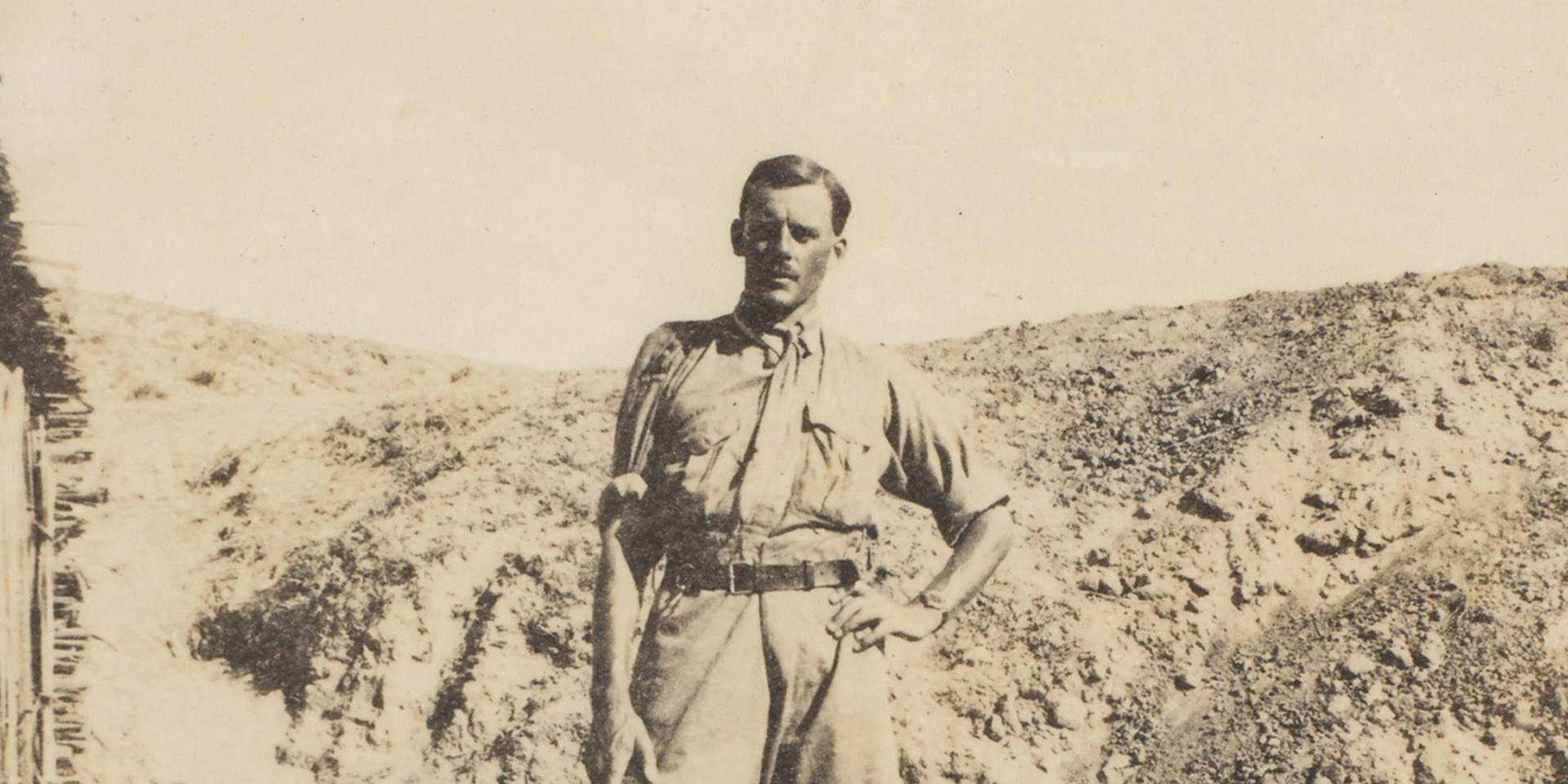Staffordshire Soldier was ‘an officer impossible to replace’
Today (31 October 2017) the National Army Museum is publishing the story of Staffordshire soldier Captain Walter Bagot-Chester whose war diary and photographs offer a unique eyewitness account of the bitter desert struggle in 1917.
By October 1917 the reinforced British outnumbered the Turks in Palestine by two to one in infantry and eight to one in cavalry in one of the few theatres of war where mounted troops could still be used effectively. They were now ready to go on the offensive.
The commander of the British Empire forces, General Sir Edmund Allenby, decided to make a feint towards the heavily defended Gaza to wrong-foot the Turks. Bagot-Chester’s unit, 3rd Battalion the 3rd Queen Alexandra’s Own Gurkha Rifles, was involved in the testing of these defences. Aggressive raiding of the enemy lines combined with regular bombardments kept Turkish attention fixed on the Gaza front while the developing threat at Beersheba to their east went unnoticed.
On the night of 31 October Bagot-Chester and 197 men from the 3rd Battalion were ordered to raid Outpost Hill, part of a chain of redoubts and fortifications. After ‘giving each man a tot of rum’ to ward off the early morning cold the troops gathered at Penton’s gully. At 2.45am heavy howitzers opened fire on enemy trenches.
'There was a full moon…a Turkish patrol in the neighbourhood of the Burnt Tank saw us and opened a heavy fire which lasted until zero hour, when the barrage started. The men took no notice of this fire and continued forming up.'
Even as shells dropped amongst the Gurkhas they still arrived at the Turkish wire earlier than planned, and with just a few casualties. In the fight that followed, Bagot-Chester’s Gurkha troops did ‘some good kukri work’ with their knives. He noted in his diary that in one trench ‘two Turkish heads were seen cleanly separated from their bodies’.
'At several points individual bayonet encounters took place. Our stay in the enemy’s trenches lasted about 10 minutes when we returned by the same route by which we went out.'
The Turks suffered 21 killed and nine wounded, although Bagot-Chester believed it to be more, as, ‘owing to the lack of time…these were not counted.’ Casualties of the Gurkhas were two killed, three severely wounded and 22 slightly hurt. The raiders had captured 18 prisoners and one machine gun.
Bagot-Chester was later awarded the Military Cross for his exploitations, his citation in the London Gazette on 18 July 1918 stated:
'For conspicuous gallantry and devotion to duty. He led a successful raid on the enemy’s lines. He showed the greatest coolness and courage under heavy machine-gun fire, reached all his objectives, and carried out a skilful withdrawal when the operation was completed.'
Major-General Phillip Palin, commander of 75th Division, noted in his report of the raid, that:
'This is the first fight the 3/3rd Gurkhas has taken part in and the success meant a great deal to them. The raiders were well trained by Captain Bagot-Chester, who showed great resource and skill when leading the raid.'
On Bagot-Chester’s death in March 1918, Lieutenant-Colonel Sidney Eastmead, his former commanding officer, stated: ‘In the death of Captain W. G. Bagot-Chester the battalion, and the regiment, lost an officer impossible to replace.’
Notes to Editors:
For more information, please contact the National Army Museum press office at pr@nam.ac.uk or 020 7881 2433.
About Captain Walter Bagot-Chester:
Walter Greville Bagot-Chester was born on 15 March 1887 at Elford near Tamworth in Staffordshire. After attending Sandhurst he was commissioned into the Indian Army with the 3rd Queen Alexandra’s Own Gurkha Rifles in September 1908. He served with the 2nd Battalion and was promoted to lieutenant in December 1910.
In September 1915 he was promoted to captain. That month his battalion fought at Loos where he was severely wounded. After being hit Bagot-Chester and a wounded Gurkha had to lie for over 12 hours in a shell hole, under heavy fire and pouring rain, until they could eventually creep back to British lines.
He rejoined his battalion in Egypt in October 1916 and appointed battalion adjutant in December 1916. In January 1917 he was transferred form the 2/3rd to the 3/3rd Gurkha Rifles.
Bagot-Chester was wounded again during a Turkish counter-attack at Nebi Samwil near Jerusalem on 22-23 November 1917.
Promoted to acting major, on 27 March 1918 he was wounded by shellfire at Hill 1263 near Mughair Ahmed while supervising the consolidation of recently gained position. He died the following morning and was later buried at Ramleh War Cemetery.
National Army Museum
The National Army Museum is the leading authority on the history of the British Army. Founded in 1960 by Royal Charter and established for the purpose of collecting, preserving and exhibiting objects and records relating to the Land Forces of the British Crown it is a museum that moves, inspires, challenges, educates and entertains. The Museum seeks to tell the story of the British Army, the personal experiences of the soldiers who have served in it and to connect the British public and its army demonstrating how the role of the army and its actions are still relevant today.
Heritage Lottery Fund
Thanks to National Lottery players, we invest money to help people across the UK explore, enjoy and protect the heritage they care about - from the archaeology under our feet to the historic parks and buildings we love, from precious memories and collections to rare wildlife.
For more information, please contact Katie Owen, HLF press office on Tel: (020) 7591 6036 out of hours mobile: 07973 613820.






